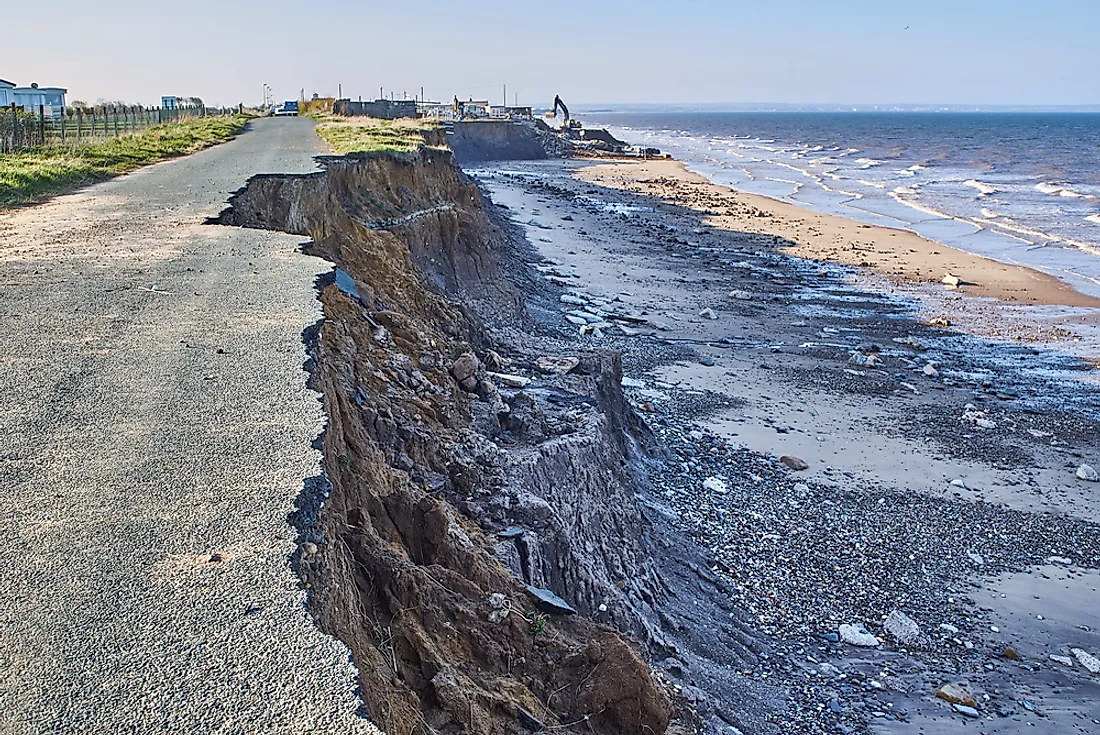What Are The Differences Between Weathering And Erosion?

Differentiating between weathering and erosion can be confusing if one does not understand the technical details leading to the two processes. Weathering and erosion are natural geological processes that act on matter on the surface of the earth like rocks and soil, causing them to move and reshape the face of the earth. Weathering is the breaking up of rocks into smaller fragments changing the rock’s size and structure. Forces of nature are majorly responsible for this process. Erosion, on the other hand, involves processes like wind, water flow, and ice movement, resulting in a change from one location to another.
Weathering Process And Types
As the name suggests, in weathering, weather action causes the breaking of rocks into smaller pieces but do not move to another location. There are three types of weathering:
- Physical, where rocks may collide with each other and break or fracture due to applied pressure or fracture due to a sudden release of pressure. In some cases, water may gather into rock cracks during the day. When the temperature drops water solidifies. During solidification, water increases in volume and widens the crack, repeatedly, this breaks the rock.
- Chemical weathering occurs when water from rainfall or running water oxygenates rock minerals or dissolve them completely leaving gaps that make the rock weak and crack.
- Biological weathering which takes place when plant roots grow into rocks and crack or break the rock into smaller pieces.
Erosion Process
In erosion, natural forces sweep away broken rock pieces and settle them in another location. This action may happen by the action of the wind, water, or melting ice movement leaving behind a different landscape while forming another landscape where the pieces settle. Erosion transports pieces of rocks and usually settles them in lower altitude areas, near river mouths or by the seas. The process of erosion has four major stages:
- Detachment, where the rocks break into small particles.
- Entrainment, where the rock sediments mix with water, air or melting ice.
- Transportation through one of the forces of nature.
- Deposition, which means where the particles settle.
Relationship Between Weathering And Erosion
In looking at the differences between weathering and erosion, it is imperative to understand that weathering can be chemical, physical or biological while erosion is purely the movement of sediments from one place to another, evidently, weathering usually leads to erosion as it breaks down rock particles to sizes that natural forces can transport. Weathering is unstoppable, but humans have since found ways to reduce erosion through mitigation by building gabions or planting trees.
Advantages Of Weathering And Erosion
Both weathering and erosion lead to the formation of new geological features through surface reshaping. Weathering provides particles that eventually form sedimentary rocks like limestone and sandstone, plus, chemical weathering helps in reducing atmospheric carbon dioxide. If weathering did not exist, the earth would consist of bare rocks unable to support flora and fauna. Most of the fertile soils are products of weathering process. Soil erosion deposits soil rich in minerals to places that were not fertile, making them agriculturally productive.
Disadvantages Of Weathering And Erosion
Weathering is a leading cause of breaking down of human-made structures like roads, bridges, and houses. Chemical weathering also results to a process called oxidation which is responsible for rusting. Weathering and erosion may cause natural disasters through mass wasting like rockslides and mudslides that kill hundreds of people annually. The same weathering and erosion processes that are responsible for creation and deposition of fertile soils are also responsible for removing fertile soils from an area leaving the area agriculturally crippled.











